The 5,000 Fingers of Dr. T (1953)
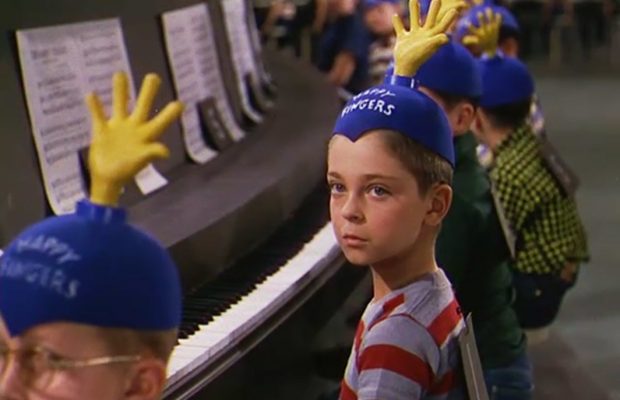
Toronto Film Society presented The 5,000 Fingers of Dr. T (1953) on Sunday, October 18, 1987 in a double bill with Stars Over Broadway as part of the Season 40 Sunday Afternoon Film Buffs Series “A”, Programme 2.
Production Company: A Stanley Kramer Company production, released by Columbia Pictures. Director: Roy Rowland. Screenplay: Dr. Seuss and Allan Scott, based on a story by Dr. Seuss. Cinematography: Frank Planer. Production Design: Rudolph Sternad. Music: Frederick Hollander. Lyrics: Dr. Seuss (Ted Geisel).
Cast: Peter Lind Hayes (Zabladowski), Mary Healy (Mrs. Collins), Hans Conreid (Dr. Terwilliker), Tommy Rettig (Bart), John Heasley (Uncle Whitney), Robert Heasley (Uncle Judson), Noel Cravat (Sergeant Lunk), Henry Kulky (Stroogo).
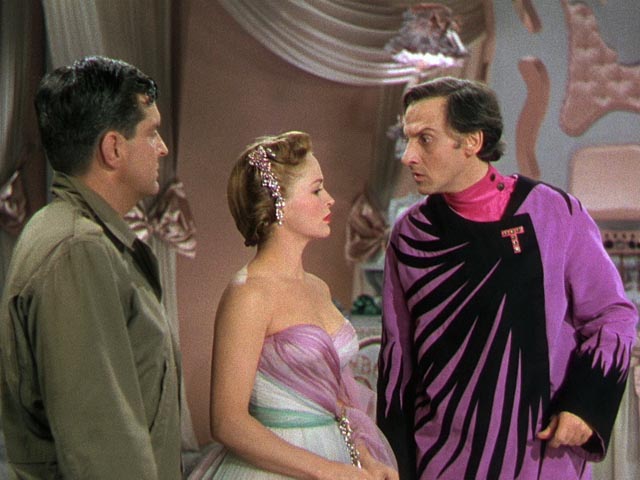
A visit to a “World of Oz”, populated by piano key-boards, sinister music teachers and little green mouldy men, rather than Munchkins and good and bad fairies!! That’s how one might quickly look at The 5,000 Fingers of Dr. T. It’s a film much talked about, and seldom seen since its release in the summer of 1953.
The basic plot deals with Bart Collins (Tommy Rettig), a very typical young man who would rather be out playing baseball and romping with his dog than practising the scales under the tutelage of Dr. Terwilliker (Hans Conreid). The characters are established, and the villains created–as well as the eventual hero–in the early minutes of the film. Then sleep overtakes our young vertuoso, and sets the stage for the fantasy which follows.
The ballet of strange creatures begins the trip to the terrifying land of Dr. T–a land dominated by the castle of the evil Doctor, who has set about to hold a school for 500 young pianists, who are held captive. Not content to capture only the piano-players, Dr. T has a dungeon, deep below the castle itself, for all who would take up some instrument other than the piano.
The ballet is one of the highlights, indeed maybe THE highlight of the film, with the creatures accompanying themselves on their favourite instruments, which have been fashioned from all kinds of odd materials. Reviewer “Brog”, in the Variety Review of the film, termed the sequence one of “imaginative” thought and execution”.
There were, and are, diverse opinions on the film. Reviewers at the time found the good and the bad, marvelling at the concept, but not too delighted with the finished product in many cases.
Given the story, and watching the finished product, it should be of little surprise that the story and conception were shaped by the dean of children’s books, “Dr Seuss” (Ted Geisel). The Stanley Kramer unit at Columbia undertook the production; while Dr. Seuss also contributed to the screenplay with Allan Scott, and did the lyrics for the songs with Frederick Hollander. Again, quoting Variety: “the results are sometimes fascinating, more often fantastic, in keeping with the humour associated with Dr. Seuss and his cartoons and children’s books”. The music in the film, is neither memorable nor totally forgettable, with Rettig’s rendering of “The Kid’s Song” quite touching.
Peter Lind Hayes and Mary Healy team for duets, and also solo performances. Tommy Rettig was born in 1941 in Jackson Heights, New York. He started his career at the age of six, touring with Mary Martin in “Annie Get Your Gun”. He made his screen debut at the age of nine. (Rettig was 12 at the time of our feature today). During the 1950’s he appeared in 17 films, including Panic in the Streets, Two Weeks With Love, Weekend With Father, The Lady Wants Mink, So Big; River of No Return, and The Cobweb. He gained wide public recognition in the Lassie TV series as Jeff, Lassie’s first master, from 1954 through 1958. He had little luck in adult roles, and retired with his wife to a California farm. In 1972 he was arrested for growing marijuana and in 1975 in 1975 he was arrested on charges of cocaine smuggling and sentenced to five years in prison. Hans Conreid was born in Baltimore in 1917, and acted in radio dramas in Hollywood for three years, before making his film debut in 1939. During World War II he specialized in Nazi parts. Some of his film highlights included The Gay Falcon (1941), Saboteur, Journey Into Fear (1942), Hitler’s Children (1943), The Senator Was Indiscreet (1947), On the Town (1949), Summer Stock (1950), Bus Stop (1956), The Patsy (1964) and The Shaggy D.A. (1976). Peter Lind Hayes and Mary Healy make one of their few film appearances, and their only appearance together on the screen. The husband-wife team were night-club and radio entertainers, and in the 1950’s were featured for a lengthy stretch, along with comedian Robert Q. Lewis, as regular fill-ins for Arthur Godfrey on his well-remembered CBS morning show, which was simulcast on radio and television. Hayes also appeared in the 1956 film Once You Kiss a Stranger, with Paul Burke and Carol Lynley.
NOTES: The film today was a pioneer in its field, since it was available in stereophonic sound and 1.85 to 1 projection ration–an asset to theatres with big screens. And there are very few surviving Technicolor prints of The 5,000 Fingers of Dr. T today. Toronto Film Society was able to obtain the beautiful “Tech” print for today’s showing, giving you a first-hand look at the lavish use of the process, which adds immeasurably to the delight of the production.
Notes by Bill Sturrup

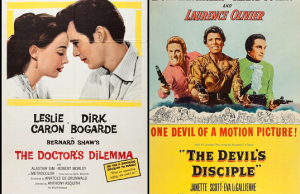
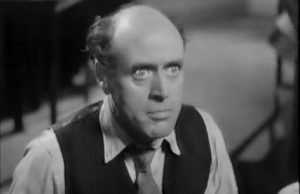
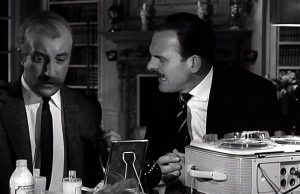






Leave a Reply